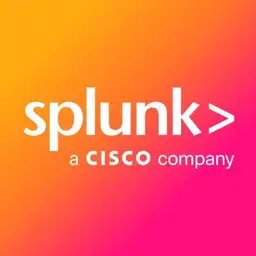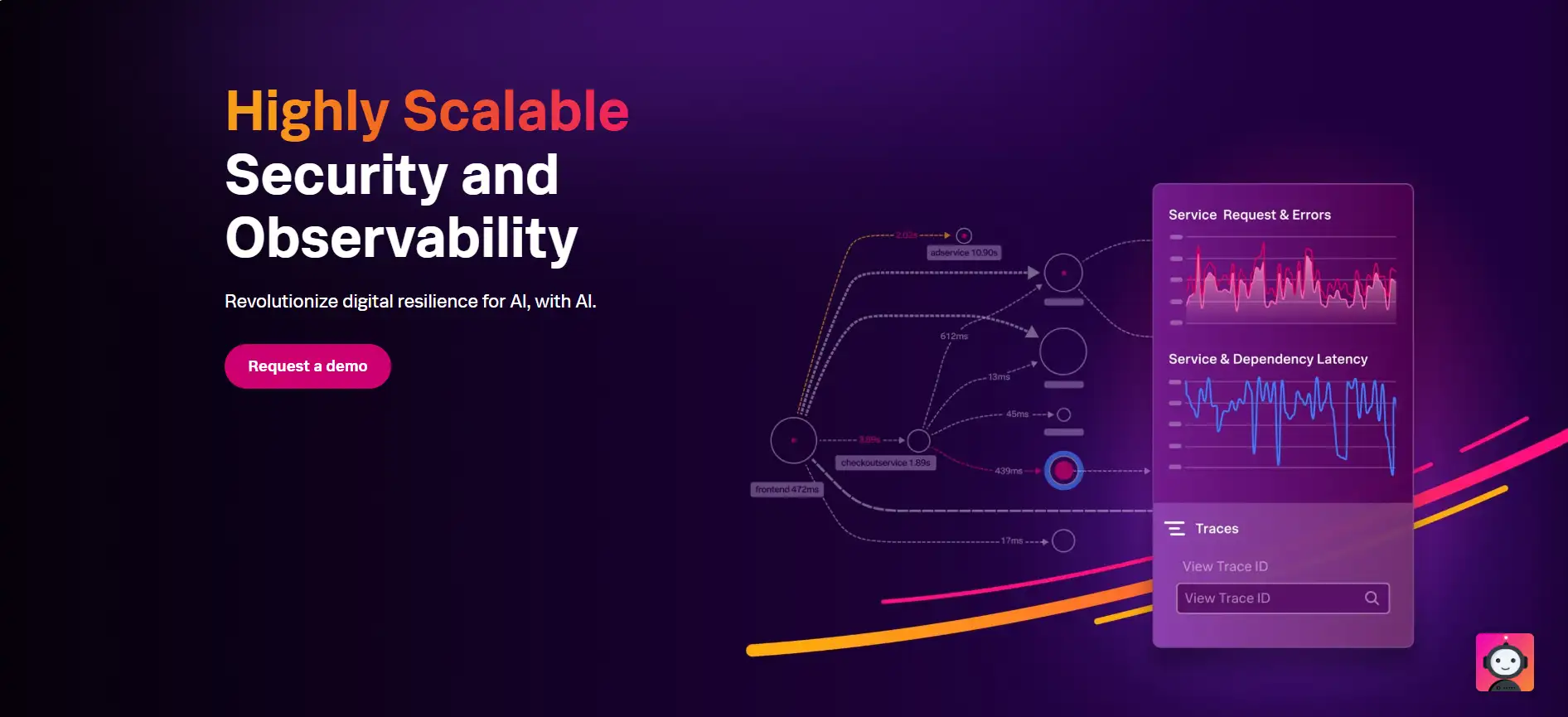About Splunk
Splunk is an industry-leading platform for security, observability, and AI-driven data analysis, now part of Cisco. Originally founded in 2003 to help organizations analyze and visualize machine data, Splunk has evolved into a core tool for enterprises aiming to build digital resilience. It enables ITOps, SecOps, and engineering teams to stay ahead of threats, outages, and inefficiencies by making data actionable.
With its highly scalable platform, Splunk powers real-time visibility, threat detection, incident response, and performance optimization across complex digital environments. It ingests logs, metrics, events, and traces from any source — whether on-prem, cloud, or hybrid. Built to support modern demands like AI observability, agentic workflows, and federated data access, Splunk empowers teams to accelerate innovation while minimizing risk.
Splunk is a unified platform designed to deliver comprehensive security, observability, and AI-powered analytics across enterprise-scale digital environments. As the only vendor recognized as a leader in both the Gartner® Magic Quadrant™ for SIEM and Observability Platforms, Splunk has become the go-to solution for organizations seeking to proactively monitor, secure, and optimize their infrastructure.
At the heart of the platform is an AI-native data engine capable of ingesting, parsing, and analyzing massive volumes of machine data across IT systems, applications, and cloud services. Whether it’s real-time metrics, logs, traces, or events, Splunk supports over 2,000 integrations, from AWS, Azure, and Google Cloud to OpenTelemetry and proprietary APIs. This flexibility allows enterprises to build visibility into every layer of their tech stack.
Splunk delivers critical functionality across domains: SIEM (Security Information and Event Management) through Splunk Enterprise Security; application performance monitoring and infrastructure observability through Splunk Observability Cloud; and log aggregation and analysis with Splunk Cloud Platform. Organizations use Splunk to reduce downtime by up to 82% and remediation times by 80%, enabling faster time to market and more reliable service delivery.
Its agentic AI capabilities enhance automation for use cases like fraud detection, advanced threat response, and AI observability. With natural language querying, customizable dashboards, and intelligent alerting, Splunk empowers teams to detect anomalies and respond to incidents with unprecedented speed. It also offers compliance support, regulation tracking, and governance tools to help organizations meet growing industry and legal standards.
Competitors in the space include Datadog (observability), Sumo Logic (SIEM/log management), and New Relic (APM), but Splunk differentiates through its depth of integrations, security capabilities, and ability to scale across enterprise ecosystems. Now backed by Cisco, Splunk is poised to become even more foundational to digital infrastructure.
Splunk offers a suite of transformative benefits and features that make it essential for enterprises focused on security, observability, and AI-powered operations:
- Unified Security and Observability: Splunk provides a single platform that combines SIEM and observability tools, allowing organizations to monitor, secure, and optimize their entire digital footprint in real time.
- AI-Native Platform: Splunk leverages agentic AI to streamline threat detection, automate response workflows, and enhance system observability using natural language querying and intelligent data correlation.
- Massive Data Compatibility: With over 2,000 integrations, Splunk supports seamless ingestion of logs, traces, events, and metrics from AWS, Azure, GCP, databases, cloud-native apps, and more.
- Scalable Architecture: Built for enterprises, Splunk scales effortlessly across hybrid and multi-cloud environments, helping teams operate reliably, securely, and with high performance — regardless of infrastructure complexity.
- Market-Leading Recognition: Splunk is consistently ranked as a Leader in the Gartner® Magic Quadrant™ for both SIEM and Observability Platforms, reflecting its depth of capabilities and innovation.
- Real-Time Insights & Response: Teams using Splunk can reduce downtime by up to 82% and accelerate remediation by 80% through actionable insights, customizable alerts, and cross-functional visibility.
- Enhanced Developer & Analyst Experience: Features like natural language search, low-code dashboards, and embedded AI assistants empower users across departments to extract and act on insights — fast.
- Secure & Compliant: Splunk supports advanced compliance, privacy, and governance tools, making it suitable for highly regulated industries including finance, healthcare, and critical infrastructure.
- Community and Ecosystem: With an extensive user community, partner network, and marketplace of add-ons, Splunk ensures constant innovation and peer support.
Splunk offers a powerful yet accessible platform for teams looking to gain visibility, reduce threats, and manage operations intelligently. Here’s how to get started with Splunk:
- Visit the Official Website: Head to splunk.com and explore available products including security, observability, and IT operations tools.
- Sign Up for a Free Trial: Splunk offers multiple free trial options for different use cases including Splunk Cloud Platform, Enterprise Security, and Observability Cloud.
- Install and Configure: Depending on your infrastructure, deploy Splunk via cloud, on-premise, or hybrid options. Use agents or OpenTelemetry for data ingestion.
- Connect Your Data: Ingest logs, metrics, and events from AWS, Azure, GCP, private clouds, databases, apps, and more using over 2,000 pre-built integrations.
- Explore Dashboards and Alerts: Use customizable dashboards to monitor KPIs, set up alert conditions, and begin proactive monitoring across your environment.
- Deploy AI Tools: Leverage AI assistants, natural language querying, and predictive analytics to reduce detection and response times.
Splunk FAQ
Splunk integrates agentic AI across its platform to automate complex workflows, detect threats faster, and deliver insights in natural language. In security operations, AI helps correlate signals across endpoints and networks, enabling proactive threat detection and rapid investigation. For observability, it accelerates anomaly detection across infrastructure, apps, and user experiences. Splunk empowers teams to act in real-time with AI-generated recommendations and visualizations.
Yes, Splunk is built to ingest and unify data from on-prem, cloud, and hybrid sources. It supports integrations with AWS, Azure, Google Cloud, and private clouds, enabling full visibility into modern, distributed environments. With support for OpenTelemetry, SDKs, agents, and over 2,000 apps, Splunk ensures you can observe and secure your infrastructure, no matter where it lives.
Splunk goes beyond traditional SIEM tools by combining security analytics, log management, and AI-powered automation in a single, scalable platform. It supports real-time ingestion, threat enrichment, and low-latency correlation across massive datasets. Recognized as a Leader in the Gartner® Magic Quadrant™ for SIEM for over 10 consecutive years, Splunk is trusted by enterprises to power their security operations centers (SOCs) worldwide.
Splunk significantly lowers MTTD and MTTR through real-time alerts, AI-based triage, and automated response actions. Its correlation engine links alerts to actionable context, while dashboards and playbooks help teams act quickly. On average, organizations using Splunk report up to 80% faster remediation times, preventing minor issues from becoming critical incidents.
While Splunk is a powerful tool for technical teams, its intuitive interface and natural language search features also make it accessible to business stakeholders. Users can create reports, monitor KPIs, and gain data-driven insights without needing to write complex queries. With tools like AI assistants and low-code dashboards, Splunk supports cross-functional collaboration across security, IT, and business teams.
You Might Also Like












